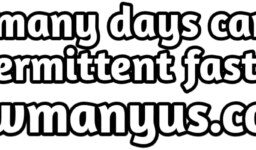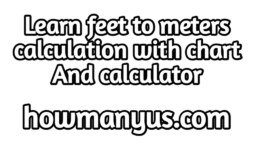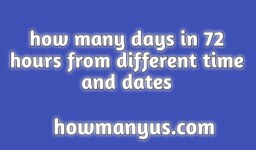1/4 cup to tbsp

Converting measurements from one unit to another is a common task in cooking and baking. In this case, we want to convert 1/4 cup to tablespoons. Let’s break down the process step by step.
First, let’s establish the relationship between cups and tablespoons. In the United States customary system, there are 16 tablespoons in 1 cup. This means that we can convert from cups to tablespoons by multiplying the number of cups by 16.
Now, let’s calculate the conversion from 1/4 cup to tablespoons.
Step 1: Convert the fraction to a decimal. To convert 1/4 to a decimal, divide the numerator (1) by the denominator (4): 1 ÷ 4 = 0.25
Step 2: Multiply the decimal value by the conversion factor. Multiply the decimal value (0.25) by the number of tablespoons in 1 cup (16): 0.25 × 16 = 4
Therefore, 1/4 cup is equal to 4 tablespoons.
It’s worth noting that the conversion factors can vary slightly depending on the country or region you are in. In some countries, the metric system is used, where the conversion from cups to tablespoons might be different. However, the conversion factor I provided above is the commonly used one in the United States.
Now, let’s explore this conversion a bit further by discussing the use of tablespoons in cooking and baking.
Tablespoons (tbsp) are a larger unit of measurement compared to teaspoons (tsp) and are frequently used in recipes for measuring ingredients like spices, sauces, and oils. They provide a more precise measurement than using larger units like cups or fluid ounces. A tablespoon is approximately equal to 14.79 milliliters (ml) in the metric system.
When converting between tablespoons and other units of measurement, it’s helpful to know some common equivalents:
- 1 tablespoon (tbsp) = 3 teaspoons (tsp)
- 1 tablespoon (tbsp) = 0.5 fluid ounces (fl oz)
- 1 tablespoon (tbsp) = 14.79 milliliters (ml)
These equivalences can be useful when following a recipe that provides measurements in different units.
To summarize, 1/4 cup is equal to 4 tablespoons. Tablespoons are a convenient unit of measurement for smaller quantities in cooking and baking, and they can be easily converted to other units like teaspoons or fluid ounces using the appropriate conversion factors. Remember to consider regional variations in measurements when working with recipes from different countries.
Certainly! Here’s a continuation of the previous response:
Now that you understand the conversion from 1/4 cup to tablespoons, let’s explore some practical examples of how this conversion can be applied in cooking and baking.
Example 1: Chocolate Chip Cookies Imagine you’re following a recipe for chocolate chip cookies that calls for 1/4 cup of chocolate chips. If you prefer to measure the chocolate chips using tablespoons, you now know that you’ll need 4 tablespoons of chocolate chips.
Example 2: Salad Dressing Suppose you’re making a homemade salad dressing, and the recipe requires 1/4 cup of olive oil. If you prefer to measure the oil in tablespoons, you can convert it by multiplying 1/4 cup by 16, which equals 4 tablespoons. So, you would need 4 tablespoons of olive oil for the dressing.
Example 3: Spices Many recipes call for small amounts of spices, typically measured in teaspoons or tablespoons. Let’s say you’re making a curry and the recipe calls for 1/4 cup of curry powder. To convert it to tablespoons, multiply 1/4 by 16, which equals 4 tablespoons. Therefore, you would need 4 tablespoons of curry powder.
By understanding the conversion from cups to tablespoons, you have the flexibility to adapt recipes and measurements to your preferences or the tools you have available in your kitchen. Whether you’re adjusting a recipe, using a different measuring tool, or scaling up or down, being able to convert between units is an essential skill in the culinary world.
It’s also important to note that accuracy in measurements can greatly impact the outcome of your recipes. While tablespoons provide a more precise measurement compared to cups, it’s always a good practice to use measuring spoons specifically designed for tablespoons to ensure accuracy.
Additionally, keep in mind that the conversion factors discussed here are based on the United States customary system. If you are in a different country or using the metric system, the conversion factors may vary. Always refer to reliable conversion charts or resources specific to your region for accurate measurements.
I hope this information helps you in your culinary adventures! If you have any more questions or need further assistance, feel free to ask.
Certainly! Here’s some additional information:
When it comes to cooking and baking, precise measurements are crucial for achieving the desired results. Converting between different units of measurement allows you to work with various recipes and adjust quantities as needed.
Here are a few more conversions between cups and tablespoons that you might find useful:
- 1/2 cup = 8 tablespoons
- 3/4 cup = 12 tablespoons
- 1 cup = 16 tablespoons
Knowing these conversions can be helpful when you come across recipes that provide measurements in cups and you prefer to use tablespoons instead.
It’s worth mentioning that tablespoons are not only used for dry ingredients but also for liquids. In the case of liquids, the volume measurement remains the same regardless of the ingredient. For instance, 1/4 cup of water is equivalent to 4 tablespoons of water.
Moreover, if you need to convert tablespoons to teaspoons, remember that there are 3 teaspoons in 1 tablespoon. This conversion is often handy when working with smaller quantities, especially for recipes that call for precise measurements of spices or flavorings.
In some cases, you might encounter recipes that use metric measurements instead of the US customary system. In the metric system, the conversion factors are different. For example, 1 cup is equivalent to approximately 16.67 tablespoons in the metric system. It’s crucial to be aware of the measurement system being used in the recipe you’re working with to ensure accurate conversions.
Lastly, it’s always a good idea to have a set of measuring spoons and cups on hand to make precise measurements easier. These tools are widely available in kitchenware stores and can greatly assist you in following recipes accurately.
Remember, cooking and baking are both science and art, and having a good grasp of measurement conversions allows you to be more versatile and confident in the kitchen. Feel free to ask if you have any further questions or if there’s anything else I can assist you with!




Leave a comment